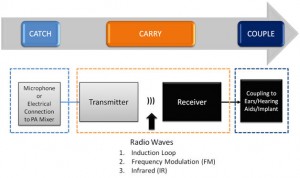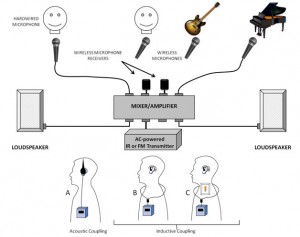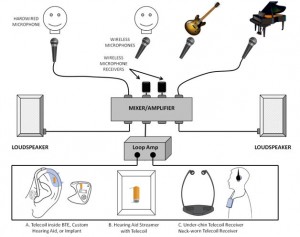Posted on Friday, 12th December 2014 by Herbert Casey
 Print This Post
Print This Post
If you have a spouse or other loved ones that are dependent on you, you should make sure that they are provided for upon your death. More importantly, you must make sure that the information is made available to them. During this period, it’s very difficult for people to focus, so the more you can do now, the better it will be for your loved ones. This article will help you organize information regarding the following Federal Benefits: Annuity (CSRS & FERS), Health Benefits (FEHB), Federal Employees Life Insurance (FEGLI), Thrift Savings Plan (TSP) and Veteran’s Benefits. By organizing this information, your survivors will have the information they need to handle your affairs upon your death.
Print a copy of this article and keep it with your retirement paperwork and forward this article to others in your organization that will benefit from this information.
How to Report a Death
Survivors, family, or estate representatives are required to notify OPM immediately in the event of the benefit recipient’s death. To report a death of a retiree or person receiving benefits from the Office of Personnel Management (OPM) your survivor(s)/representative must:
- Contact OPM online: Report a Death,
- Email OPM at: retire@opm.gov
- Call OPM at: 1-88USOPMRET — 1 (888)767-6738 or TTY: 1(855) 887-4957.
The hours of operation are 7:30 A.M. until 7:45 P.M (Eastern Time). or
- Write to OPM at:
U.S. Office of Personnel Management
Retirement Services Program
Post Office Box 45
Boyers, PA 16017-0045
When the death is reported, the following information must be provided to OPM:
- The full name of the deceased and date of death
- Their retirement claim number and social security number.
The survivor or representative should also include their name, address, and telephone number. When OPM receives the report that someone who receives benefits has died, they will stop annuity payments. OPM will send the appropriate forms for claiming a survivor annuity or a lump-sum payment of retirement contributions, if applicable. In many cases, OPM can start monthly payments to an eligible surviving spouse based on the records on file.
The Department of the Treasury will reclaim all direct deposit payments made after the date of death from the financial institution to which they were disbursed. The financial institution will debit the account to which the payments were previously credited. Therefore, the annuitant’s account should remain open until reclamation of any payments is completed.
Uncashed checks payable to the deceased must be returned to the U.S. Department of the Treasury. The survivor should void any uncashed checks by noting the annuitant’s date of death on them before returning them. Voided checks should be returned to the following address:
U.S. Department of the Treasury
P.O. Box 24720
Oakland, CA 94623-1720
How To Apply for Benefits
To apply for death benefits, the survivor/representative will complete the appropriate Application for Death Benefits SF 2800 for Civil Service Retirement System (CSRS) or SF 3104 for FERS retirees and the SF 3104B for when a FERS employee died while employed at the time of death. You can download these OPM Standard PDF fill-in Forms online.
Attach a copy of the annuitant’s death certificate and a copy of the marriage certificate. Send the completed application to:
Office of Personnel Management
Retirement Operations Center
ATTENTION: Death Claims Section
Post Office Box 45
Boyers, Pennsylvania 16017-0045
A widow or widower who is claiming benefits for himself or herself and on behalf of children should file one application.
Lump Sum Benefit
If an employee dies and no survivor annuity is payable based on his/her death, the retirement contributions remaining to the deceased person’s credit plus applicable interest, are payable to the beneficiary.
When Benefits Begin
- Widow/Widower (The survivor annuity begins on the day after the annuitant’s death).
- Former Spouse (If a former spouse is awarded a survivor annuity based on a court order, the survivor annuity begins to accrue on whichever day is later:)
- The day after the annuitant’s death, or)
- The first day of the second month after OPM receives a certified copy of the court order along with any additional necessary supporting documentation.
- Child (The survivor annuity begins to accrue on the day after the annuitant’s death).
Federal Employees’ Group Life Insurance (FEGLI) Death Benefits
To claim FEGLI benefits for the death of an annuitant, the beneficiary/representative will need to complete Form FE-6 , Claim for Death Benefits. For assistance in completing the form, contact the Office of Federal Employees’ Group Life Insurance (1-800-633-4542). The form must be printed out and sent along with a certified copy of the death certificate to:
Office of Federal Employees’ Group Life Insurance
P.O. Box 6080
Scranton, PA 18505-6080
To claim FEGLI benefits for a family member’s death, the beneficiary/representative must complete Form FE-6DEP Statement of Claim, Option C . For assistance in completing the form, contact the Office of Federal Employees’ Group Life Insurance (1-800-633-4542). The form must be printed out and sent along with a certified copy of the death certificate, to:
OPM
Retirement Operations Center
Attn: FE-6 DEP
Boyers, PA 16017
Additional FEGLI death benefits information is available through OPM.
Federal Employees Health Benefits
If you are not enrolled or enrolled in Self Only coverage, your survivors are not eligible for FEHB benefits upon your death.
If you are enrolled in Self and Family, all of your survivors who meet the definition of “family member” can continue their health benefits coverage under your enrollment as long as any one of them is entitled to a survivor annuity.
Additional FEHB information is available online including links to the FEHB Handbook.
Veteran’s Survivor Benefits
Survivors can receive an annuity after a veteran dies, under the Survivor Benefit Program (SBP) . When a veteran dies, his/her retirement pay stops. However, if the veteran enrolled in the Survivor Benefit Program, a surviving spouse or minor children can continue to receive a portion of that pay. At the time of retirement, veterans can enroll in the Survivor Benefit Program. Under this program, a retiree forfeits 6.5 percent of “covered” retirement pay each month in premiums. In return, when the retiree dies, the surviving spouse or minor children get an annuity equal to 55 percent of the covered retirement pay.
Burial benefits available for eligible spouses and dependents include burial with the Veteran and perpetual care of the interment site at a national cemetery. The spouse or dependent’s name and date of birth and death will be inscribed on the Veteran’s headstone at no cost to the family. Some Veterans may also be eligible for burial allowances. For additional burial benefits information read Dennis Damp’s article titled “Final Arrangements: Funeral and Burial Options (Part 2).” You can also visit the National Cemetery Association’s web site for additional information.
Thrift Savings Plan (TSP) Death Benefits (Updated 1/5/2015)
When a spouse is determined to be a beneficiary of part or all of a civilian or uniformed services account, the TSP will establish a beneficiary participant account in the spouse’s name if the spouse’s inherited share is $200 or more. The entire balance of the beneficiary participant account will be invested in the Government Securities Investment (G) Fund until the spouse makes a different investment choice or chooses to withdraw the money. The money in a beneficiary participant account is not subject to Federal income tax withholding until it is withdrawn.
When a non-spouse inherits a TSP account funds cannot remain in the TSP. Your account will have to be distributed to the beneficiary(ies) you indicate on Form TSP-3, Designation of Beneficiary. A will or any other document is not valid for the disposition of your beneficiary participant account. It is not a substitute for a Designation of Beneficiary form. If you do not submit a
In order for your beneficiaries to receive your account balance after your death, they (or their representatives) must complete the Form TSP-17, Information Relating to Deceased Participant and send it to the TSP along with a copy of the certified death certificate. Once the TSP processes this information and determines the beneficiaries for your account, they will be contacted with additional information and instructions.
If you submit a withdrawal form requesting a TSP Life Annuity and you die before the annuity payments begin, the amount used to purchase the annuity will be returned to the TSP. The TSP will, if possible, distribute this money consistent with your annuity beneficiary designation.
For additional information visit the TSP’s web site and read their detailed death benefits information.
- TSP Survivor Withdrawal Options
Designation of Beneficiary Forms – Keep Them Updated
Remember that unless you change or cancel your designation, the person named-such as a former spouse-will receive the benefit. You also need to keep your designated beneficiaries’ addresses current. Failure to do so may mean that your beneficiary cannot be located and therefore benefits will not be paid to that person. You can download the forms listed below on our Retirement Forms page.
- If retired under FERS, use SF 3102 , Designation of Beneficiary/FERS.
- If retired under CSRS, use SF 2808 , Designation of Beneficiary/CSRS.
- For TSP, use TSP-3, Designation of Beneficiary/TSP.
- For FEGLI, use SF 2823 , Designation of Beneficiary/Federal Employees Group Life Insurance.
Although, this article covered some federal benefits your survivors should know about, you should also organize all other personal and financial information as part of your estate planning. You will need to provide your survivors with information about your assets, financial accounts (401k, banks, stocks, etc.), and insurance (life, long-term care, auto, etc.). The Survivor’s Guide and checklist available on this site will help you compile this information and includes an eleven part series on how to prepare a comprehensive survivor’s binder for your loved ones.
Learn more about your benefits, employment, and financial planning issues on our site and visit our Blog frequently at https://fedretire.net to read all forum articles.
Helpful Retirement Planning Tools – Distribute these FREE tools to others that are planning their retirement
Visit our other informative sites
The information provided may not cover all aspect of unique or special circumstances, federal regulations, medical procedures, and financial information are subject to change. To ensure the accuracy of this information, contact relevant parties and ask them to review your official personnel file and circumstances concerning this issue. Retirees can contact the OPM retirement center. Our article is not intended nor should it be considered investment advice and our articles and replies are time sensitive. Over time, various dynamic economic factors relied upon as a basis for this article may change. The advice and strategies contained herein may not be suitable for your situation and this service is not affiliated with OPM or any federal entity. You should consult with a financial, medical or human resource professional where appropriate. Neither the publisher or author shall be liable for any loss or any other commercial damages, including but not limited to special, incidental, consequential, or other damages.
Posted in ANNUITIES / ELIGIBILITY, BENEFITS / INSURANCE, ESTATE PLANNING, FINANCE / TIP, RETIREMENT CONCERNS, SURVIVOR INFORMATION
Comments (0)|  Print This Post
Print This Post
 Print This Post
Print This Post
 Print This Post
Print This Post



